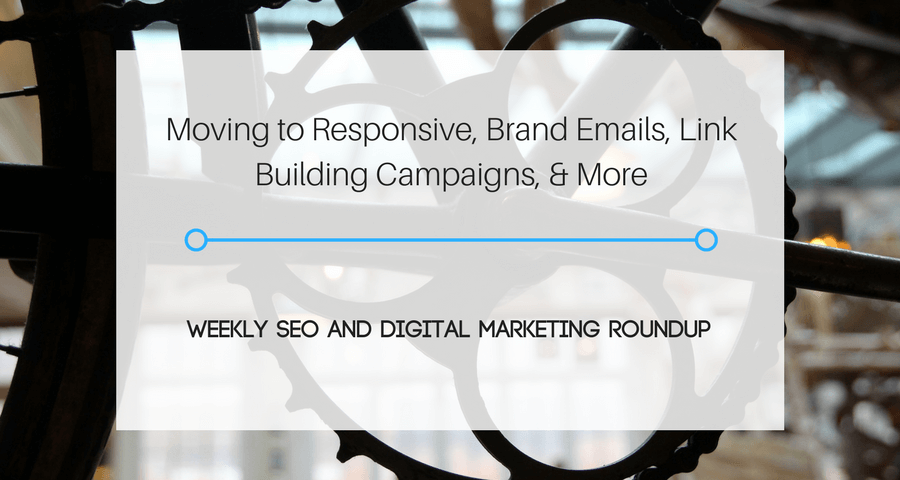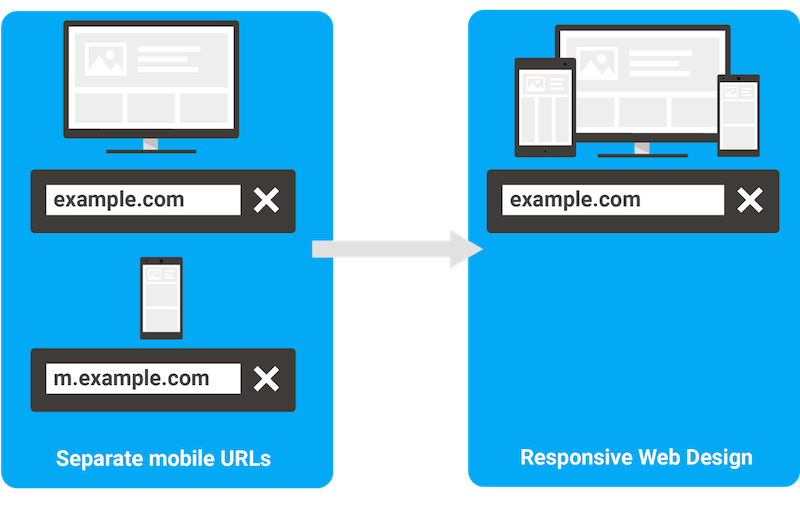
How to Move From M-dot URLs to Responsive Site [Article]
This is from Google’s official Webmaster blog, and I take it as a heavy hint from Google to prepare yourself for their mobile-first indexing update that is looking to happen sometime in 2018. They lay out how to move your site URLs when you go responsive in 4 steps and providing some imagery along with it:

If you’re not on a responsive site, it’s time to make the change. Seriously, start getting a plan together and stop delaying the inevitable.
40% of Consumers Want Emails From Brands to Be Less Promotional and More Informative [Data]
Adobe surveyed over 1,000 white collar workers for their Adobe Consumer Email Survey and it was quite clear from the results that consumers prefer emails from their brands. In fact, 61% of consumers said email was their preferred method of communication with brands.
I think a very interesting, albeit obvious, fact that came out was people wanted more informational emails from brands, and not just sales pitches. That should inform your email strategy.

5 Steps to Creating a More Efficient Link-Building Campaign [Listicle]
Who doesn’t learning more about link building? It’s the lifeblood of SEO, and becoming a more efficient link builder will help your as you progress. Here are their 5 steps for a better structured link building campaign:
- Start with a plan (I cannot vouch for this step more—it’s crucial and necessary)
- Focus on a tighter niche
- Follow a process
- Document your campaigns
- Leverage your contacts
The E-Commerce Benchmark KPI Study 2017 [Study]
Wolfgang Digital puts together an extensive report in on e-commerce KPIs. Their data set is impressive, they analyze 143 million sessions and €447 million in online revenue for their study. The data suggest strong correlations between speed and revenue growth, as well as websites with more Pinterest traffic have higher order values. Read through the study to see if you can utilize any of their findings to better your website.
What is Structured Data? And Why Should You Implement It? [Technical SEO]
I have been reading and learning more about schema and structured markup as much as I can. I find that a lot of SEOs seem somewhat scared by it and there aren’t as many studies or materials on it as other SEO topics, like building. The article sums up the issue pretty well:
Because it is code-driven, structured data is very much a boogeyman that SEOs love to hate and ignore. I fully expect the “Technical SEO is makeup” crowd to push back here. But a good bit of SEO is covering our bases, and Schema is under-served in that sense.
I personally think that 5 years from now there is going to be more of a focus and need for structured markup, and I think its better to be ahead of the curve than running trying to keep up.
Random Fun Find: We Look Like Our Names
You ever meet a person, learn their name, and think, “Yeah, that fits.” Well, it turns out that this is actually a common thing, and there is a study to back it up:
We showed subjects a picture of, say, a Scott, and they picked “Scott” from the list of four or five options 25% to 40% of the time, which is significantly more often than they would just by chance. We replicated those results in France and Israel. If you’re a Scott, there’s something about you that betrays it. It’s tattooed across your face.
Thanks for checking out this week’s digital marketing and SEO roundup!